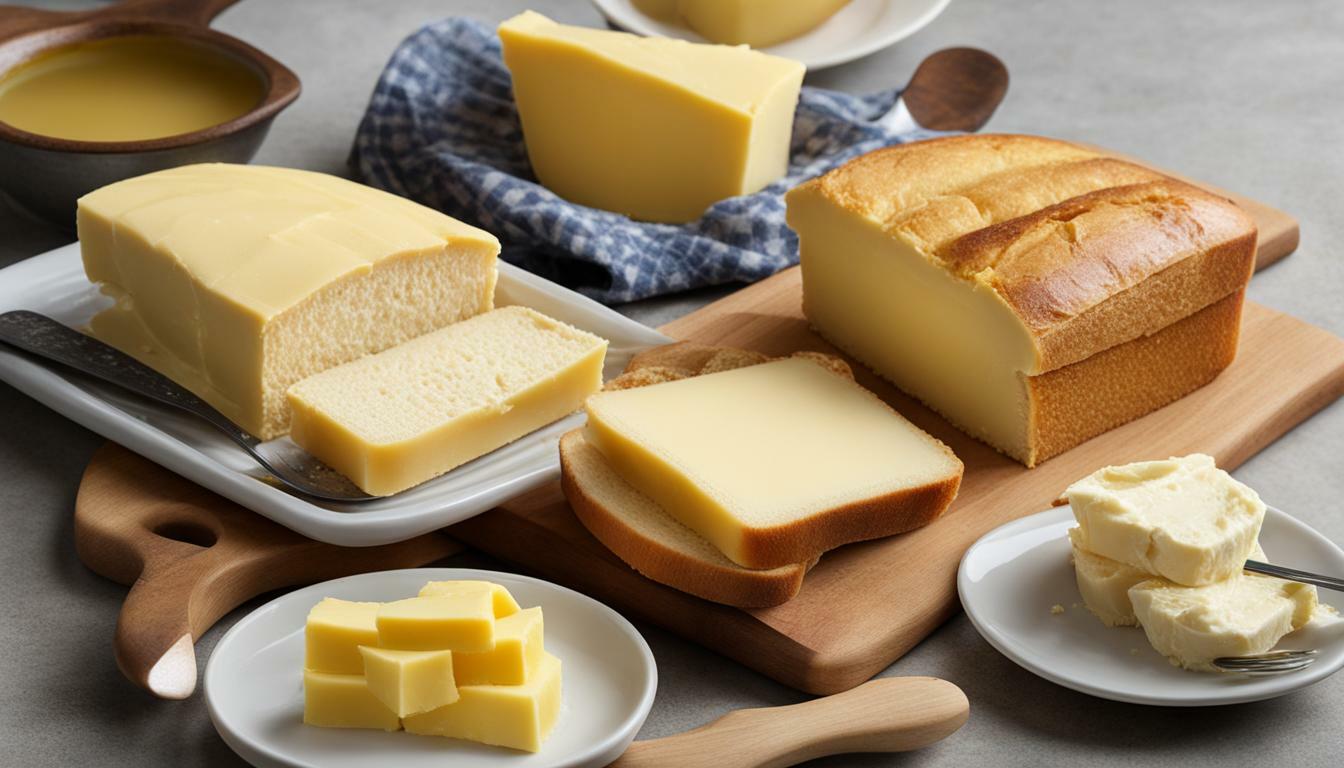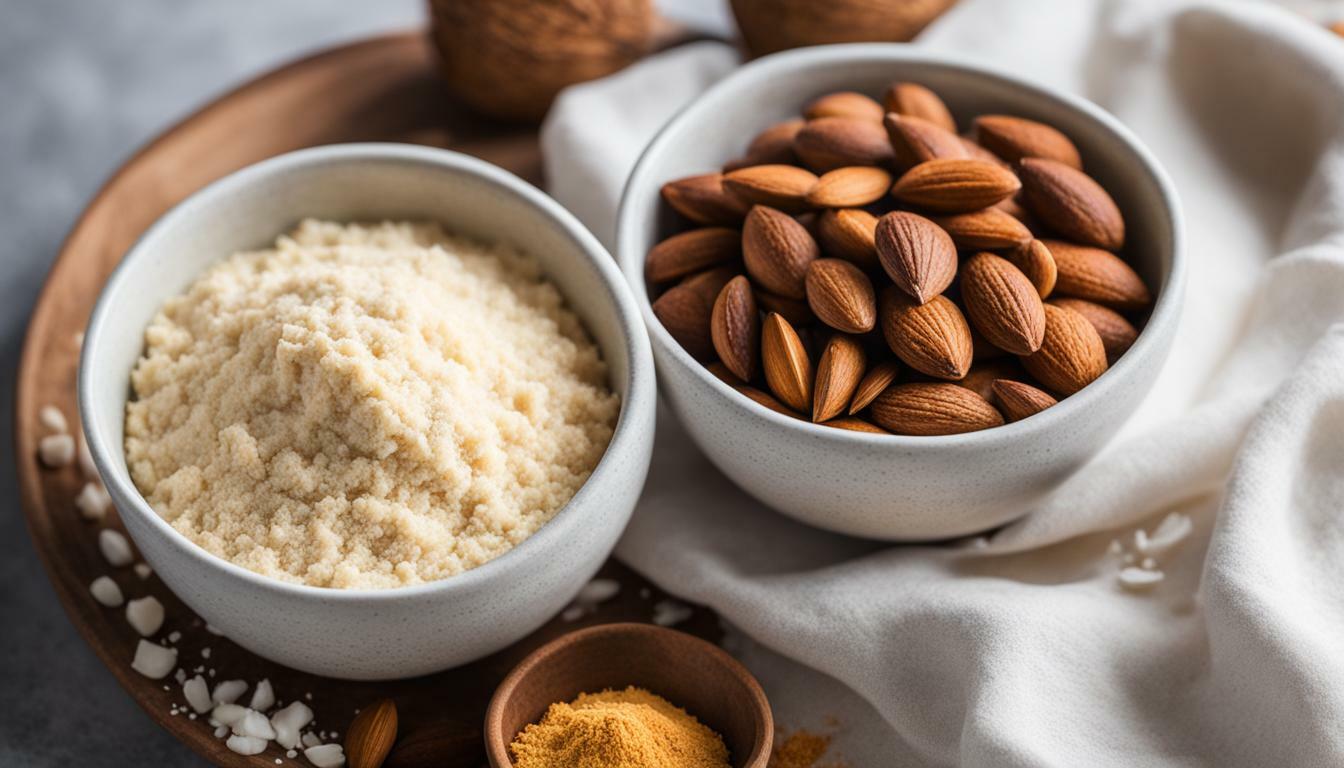Key Takeaways
- Butter and margarine are not the same, and have distinct differences that impact cooking and nutrition.
- Butter is made from animal fat, while margarine is typically made from vegetable oil.
- Butter contains more saturated fat than margarine, but margarine may contain trans fats.
- Butter has a distinct flavor and texture that can enhance dishes, while margarine is often used as a substitute.
- Understanding the differences between butter and margarine can help you choose the best option for your cooking needs and health goals.
Understanding the Ingredients
Butter and margarine may look similar, but their composition is quite different. Butter is a dairy product made from churning cream or milk. It contains at least 80% milk fat, along with water and milk solids. Margarine, on the other hand, is made from vegetable oil, water, and other additives.
One of the key differences between the two is the type of fat they contain. Butter is high in saturated fat, which has been linked to an increased risk of heart disease. Margarine, on the other hand, contains unsaturated fats, which can be beneficial for heart health.
| Ingredient | Butter | Margarine |
|---|---|---|
| Fat content | At least 80% | Varies, but typically 80% |
| Type of fat | Saturated | Unsaturated |
| Calories per tablespoon | 102 | 80 |
| Vitamins | Contains vitamins A, D, and E | May be fortified with vitamins A and D |
In addition to fat, both butter and margarine contain a variety of other ingredients. Butter may contain salt, while margarine often contains emulsifiers, preservatives, and artificial flavors and colors. Some margarines also contain trans fats, which are known to be harmful to heart health.
Tip: When choosing a margarine, look for one that is free of trans fats and has a low amount of saturated fat.
Nutritional Profiles: Butter vs Margarine
While both butter and margarine are commonly used as spreads, they differ significantly in their nutritional content. Butter is made from animal fat, while margarine is typically made from vegetable oils.
When it comes to fat content, butter is higher in saturated fats, while margarine is higher in unsaturated fats. Saturated fats have been linked to increased cholesterol levels and a higher risk of heart disease, making butter a less healthy option in this regard.
On the other hand, margarine often contains trans fats, which are also associated with increased cholesterol levels and an elevated risk of heart disease.
In terms of vitamins, butter is a good source of vitamin A and E, while margarine is often fortified with vitamins A and D.
It’s important to note that while margarine may be a healthier option in terms of cholesterol and heart disease risk, it still contains fats and calories. Moderation is key in incorporating either butter or margarine into a healthy diet.
Taste and Texture: Butter vs Margarine
When it comes to taste and texture, butter and margarine have distinct differences that can greatly affect the outcome of a dish. While butter is known for its rich, creamy flavor and smooth texture, margarine tends to have a milder taste and a more spreadable consistency.
Butter is made from churned milk or cream, giving it its signature richness and tanginess. Its high fat content also gives it a melt-in-your-mouth texture that is hard to replicate. Margarine, on the other hand, is made from a combination of vegetable oils, water, and additives like emulsifiers and colorings. This results in a less rich taste and a softer, more spreadable texture.
These differences in taste and texture can have a significant impact on the dishes they are used in. For example, butter can add a depth of flavor to baked goods like cookies, cakes, and pastries. Margarine, on the other hand, may be a better option for spreading on toast or bread, as its softer texture allows it to easily spread over the entire surface.
Butter vs Margarine in Recipes
When it comes to cooking with butter and margarine, selecting the right one can mean the difference between a perfectly balanced dish and a disappointing result. In general, butter is often used in recipes that require a rich, creamy flavor, such as sauces, gravies, and pan-fried dishes. Margarine is often used in recipes that require a softer texture, such as baked goods and spreads.
It’s important to note that some recipes may specify the use of one or the other for specific reasons, such as the flavor or the melting properties. In these cases, it’s best to follow the recipe as written to ensure the desired outcome.
“When it comes to taste and texture, butter and margarine have distinct differences that can greatly affect the outcome of a dish.”
Ultimately, the choice between butter and margarine will depend on personal preference and the dish being prepared. While butter offers a rich, creamy taste and texture, margarine offers a softer, more spreadable consistency. Both have their place in the kitchen, and understanding the differences between them can help ensure the best possible outcome for any recipe.
Cooking with Butter and Margarine
Butter and margarine are both versatile ingredients that can be used in a variety of cooking techniques. While butter is commonly used in baking and sautéing, margarine is often used for spreading and cooking at higher temperatures.
When it comes to baking, butter is typically the preferred choice due to its rich flavor and ability to create tender and flaky pastry crusts. Margarine, on the other hand, is often used for spreading on bread or melting over vegetables and popcorn.
If you’re cooking at high temperatures, margarine is a better choice as it has a higher smoke point than butter. This means that it can withstand high heat without breaking down and producing potentially harmful smoke.
When using butter in cooking, it’s important to keep an eye on it as it can easily burn due to its lower smoke point. On the other hand, margarine can be heated to a higher temperature without burning, making it a better choice for sautéing and frying.
When it comes down to it, the best choice between butter and margarine for cooking depends on your personal preferences and the specific dish you’re making. Both can be used interchangeably in many recipes, and experimenting with different ratios may yield different results.
Health Considerations: Butter vs Margarine
When it comes to health, both butter and margarine have their pros and cons. While butter is known for its delicious taste and versatility in cooking, it is also high in saturated fat and cholesterol. Consuming too much saturated fat and cholesterol can increase the risk of heart disease and stroke.
On the other hand, margarine is often marketed as a healthier alternative to butter. Margarine is typically made from vegetable oils, which are low in saturated fat and cholesterol. However, some types of margarine can be high in trans fats, which are known to be even worse for heart health than saturated fat.
When choosing between butter and margarine, it’s important to consider your individual health needs and goals. If you have high cholesterol or a history of heart disease in your family, it may be best to limit your intake of butter and opt for a healthier alternative like olive oil or avocado instead. If you choose to consume margarine, be sure to read the label and choose a brand that is low in trans fats.
Ultimately, moderation is key when it comes to butter, margarine, and any other high-fat food. By enjoying these foods in moderation and balancing them with plenty of fruits, vegetables, whole grains, and lean proteins, you can maintain a healthy and balanced diet.
Choosing Between Butter and Margarine
Now that you have a clear understanding of the differences between butter and margarine, it’s time to decide which one to use in your cooking. It ultimately comes down to personal preference and specific dietary needs. Here are some factors to consider:
Taste: Butter has a rich, creamy flavor and can enhance the taste of baked goods, sauces, and more. Margarine is often touted as a more neutral taste, but some brands have a distinct flavor that may not appeal to everyone. Consider your taste preferences when making your decision.
Nutrition: While butter is high in saturated fat and cholesterol, it does contain some vitamins and minerals. Margarine, on the other hand, can be lower in saturated fat and cholesterol, but may contain additives or trans fats. Be sure to read labels and choose a brand that aligns with your nutritional goals.
Cooking: Butter is an excellent choice for baking, but may not be suitable for high-heat cooking like frying. Margarine can be a good substitute for butter in cooking applications, but may not yield the same results in baked goods. Consider the specific cooking method when deciding which to use.
Allergies: If you have a dairy allergy, butter is obviously not an option. Margarine is often made with vegetable oils and is a suitable alternative. However, some margarine brands may contain trace amounts of dairy, so be sure to read labels carefully.
Ultimately, the choice between butter and margarine comes down to your personal preferences and dietary needs. By understanding the differences between the two, you can make an informed decision and confidently use the right option in your cooking.
Conclusion
After examining the key differences between butter and margarine, it is clear that each has unique qualities that make them suitable for certain culinary applications. While butter brings a rich, creamy flavor that is ideal for baking, margarine’s lower fat content and versatility in cooking make it a popular choice for sautéing and spreading.
From a nutritional standpoint, butter tends to be higher in saturated fat and cholesterol, while margarine may contain trans fats. However, it’s important to note that not all margarine products are created equal, and there are many options available that are free of trans fats and made with healthier ingredients.
When it comes to choosing between butter and margarine, there are several factors to consider, including taste, health, and specific cooking needs. Ultimately, the decision should be based on personal preferences and dietary requirements.
Overall, whether you choose butter or margarine, it’s important to use them in moderation as part of a balanced diet. By understanding the differences between these two popular ingredients, you can make informed choices and create delicious, healthy dishes in your kitchen.
 Skip to main content
Skip to main content


